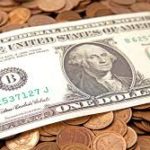 The USD is reaping the benefits of rising yields. Since the beginning of the year we’ve seen ten year bond yields in the US move from 0.91% to a one year high of 1.56%. This trend started at the turn of the New Year, but gained significant momentum in the past few weeks.
The USD is reaping the benefits of rising yields. Since the beginning of the year we’ve seen ten year bond yields in the US move from 0.91% to a one year high of 1.56%. This trend started at the turn of the New Year, but gained significant momentum in the past few weeks.
At first, currency and equity traders resisted the move with stocks powering to record highs and USD continuing its slide, investors are finally waking up to the ramifications of rising interest rates. The US policymakers say they aren’t concerned but the spike in yields has a direct impact on consumer rates. Mortgage rates for example rose to its highest level since August last year, which could put an end to the refinancing boom.
Yields are rising because investors are optimistic. They believe a strong sustainable recovery is right around the corner and prices will rise as demand comes roaring back. In this type of environment, bond yields should be higher regardless of whether the Fed raises interest rates. Currencies are particularly sensitive to interest rates that explain why USD had such a significant reaction to the 10% spike. The same is true for stocks. Rising yields increase borrowing costs and affects the discretionary incomes consumers. One to one and a half percent is a big increase on a percentage basis, but on an absolute basis, it is still very low. It took some time for USD and stocks to respond, but we could see a multi-day rise in the greenback and corresponding slide in equities.
The United States is not the only country experiencing rising yields. Ten year German bund yields also climbed to their highest level in 11 months. In contrast to the Federal Reserve, European Central Bank officials say they are closely monitoring the evolution of long-term nominal bond yields. They will ensure that they remain favorable according to ECB member. With the ECB more eager to act on rising rates than the Fed, EUR/USD should be trading lower. Unlike other major currencies that fell sharply today, EUR/USD was unchanged but it should only be a matter of time before the pair turns lower as well.
The AUD was hit the hardest by the rising USD which is not unusual because the currency is especially sensitive to the performance of stocks. Whenever there is a big market sell-off, we typically see AUD/USD and AUD/JPY sell-off. The NZD also sold off aggressively but its decline was supported by a downwardly revised consumer confidence report. USD/CAD enjoyed its strongest one day rise since 27th January this year. A move like this should be followed by continuation but the rise in oil prices holds the pair back.
The second worse performing currency was GBP which dropped reversed towards 1.40. Given how much GBP/USD has risen this month, profit taking has long been expected. GBP/USD is a trending currency, after the biggest one day drop since October 2020; a further decline can’t be rules out.